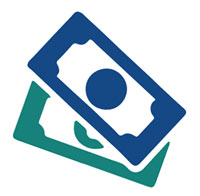

In today’s global economy, we have a variety of options for dealing with our monetary needs when traveling abroad. The following are a few tips to help make things easier and possibly more cost-effective for you while on tour.
If you have a reservation with us, be sure to review the General Information document on your My Odyssey portal for more detailed information regarding currency at your tour destination(s).
First, you will always get a better exchange rate at your destination than in the U.S. – though you may wish to obtain a small amount of foreign currency prior to your departure so you’ll have ready cash upon arrival. You can generally obtain foreign currency through large commercial banks, AAA (if you are a member), and American Express®, among other enterprises.
Most foreign airports offer some type of foreign currency exchange service, though you will typically get a lower exchange rate and/or pay a higher commission than obtaining money in town or from an ATM.
Wherever you convert cash, try not to change more money than you think you’ll need as you may have difficulty or simply lack the time to reconvert foreign currency into U.S. dollars upon departure. And please, for your own safety, only exchange currency at well-lit, public, authorized/official locations. Ask your tour director if you are unsure.
The easiest way to obtain foreign currency in most countries is to use ATMs once you arrive at your destination. Since there are no commission fees and rates are based on lower interbank rates, ATMs usually offer the best exchange rates, and you can withdraw money as needed. In order to use foreign ATMs, you must find out to which network your bankcard is connected (i.e., Cirrus, PLUS, etc.), and then check to see if that network is available where you’ll be traveling. You will need a four- to six-digit numeric PIN; the ATM works the same as it does in the U.S.
Remember that, while you will pay no commission and benefit from the best exchange rate available when using ATMs, some foreign banks may charge for the privilege of using their ATM – and your bank may charge for using a foreign ATM. However, many banks have formed foreign alliances that allow you to use their ATM cards and debit cards free of charge. We advise checking with your bank to see if this applies to any of your accounts.
And just as you would at home, take care to use only well-lit ATMs in relatively public areas, and to put all your money away before stepping back out on the street.
Note that ATMs are more common in Europe than in other parts of the world, and at that, you still may not be able to find one when you need one. And some businesses – particularly local markets and street vendors – do not accept credit cards. We strongly recommend that you rely on some combination of cash, debit card, and credit card(s) for your foreign currency needs. Note that for those Odysseys Unlimited tours where your tour director may offer an optional tour, cash is generally required.
Visa® and MasterCard® are the most widely accepted credit cards worldwide today. Still, it’s a good idea to check for information regarding your specific destination, as some places do not accept American Express® or Discover®, in some places Visa is more widely accepted than MasterCard, etc. We provide destination-specific information in the detailed General Information document available in your My Odyssey portal, but you can always double-check with your credit card company as well.
Note that many credit card companies charge a foreign transaction fee of between 2–3% percent of each transaction you make abroad. However, as more companies have started to offer credit cards that do not charge this fee, you may wish to obtain one before you depart.
Also, in the event that an overseas merchant asks if you would like your transaction converted to U.S. dollars from the local currency (called “dynamic currency conversion”), say no: the merchant can convert your purchase at a much higher rate than the credit card company may charge them and then pocket the difference.
Finally, as you may be aware, U.S. credit card companies now use the “EMV” (Europay, MasterCard, Visa) smart card system that is increasingly the norm worldwide. With EMV, the card is embedded with a computer chip to protect against fraud. Please note that most U.S.-issued EMV cards will require the cardholder to sign for their purchase (rather than use a four-digit PIN), which means these cards may not work at unmanned payment terminals, such as for train tickets, toll booths, parking garages, gas pumps, and the like. For most other transactions, however, your EMV card will be accepted.
By using this website you are agreeing to our Cookie Policy.